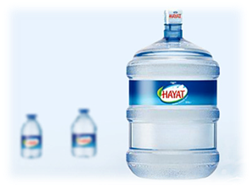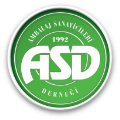Plastic Packaging

Plastic packaging is made from processing various products from oil refineries in petro-chemical facilities.Only 4% of the oil produced in the world is used in the production of plastic.Only 3% of this 4% is used in plastic packaging production.Plastic can be used for both with less material to produce more packaging and due to its easy shaping property and is therefore widely preferred in the sector.
Packaging applications of plastic have begun after World War 2.Plastic packaging has become widely used in the 1950s and has gained momentum since 1970.
Pet (Polyethylene terephthalate) Packaging
Depending on thermal processing, it is available in amorphous (transparent) and semi-crystal (opaque and white).Its most important usage advantage is that it's recyclable.


Depending on PET thickness it may be semi-rigid or rigid.It is very light.It is used as a gas and humidity barrier.It is tough and resistant to impact.When produced as a thin film, PET is usually covered with aluminum and becomes opaque.PET bottles are perfect barrier materials and are widely used in especially drinks.Various sizes of drinking water, fizzy drinks, fruit juices and vegetable oil bottles, peanut oil jars, microwave oven tray covers, salad bowls are made from PET plastic.Recently usage as signs has also increased.
When it is filled with fiber or glass particles it has a tougher and more long-lasting type.PET has been patented in Manchester in 1941 by partnership with Calico Printers.PET bottle was patented in 1973.
PVC (Polyvinyl Chloride) Packaging

There are two types of PVC materials, hard and elastic.Vegetable oil and shampoo bottles, bleach and transparent liquid detergent containers, liquid motor oil bottles, artificial leather, window cleaning products, fresh meat containers, ketchup bottles, cushy toys, electrical isolation, roofing material, pipes and window pane materials are all made from PVC.
Polyvinyl chloride was discovered accidentally in 1835 by Henri Victor Regnault and in 1872 by Eugen Baumann.In the beginning of the 20th century it was tried commercially by Griesheim-Elektron, a German chemical company owned by Russian chemist Ivan Ostromislensky and by Fritz Klatte.However, the processing difficulties and the crunchiness of polymer have stopped the efforts.
In 1926 Waldo Semon from B.F Goodrich has mixed different additives to PVC to plasticize it.This has resulted in a more elastic and easier to process material and has caused its widespread use.
PP (Polypropylene) Packaging

It is resistant to chemicals, heat and over-fatigue.It is plastic that has medium rigidity and brightness.Margarine tubes, ketchup bottles, chopsticks, chips and biscuits packs, microwave oven trays, medicine bottles, yogurt containers, chairs, suitcases, carpets, ropes and certain containers and lids are made using polypropylene plastic.It has the lowest density among plastics used in packaging.
PS (Polystyrene) Packaging


May be rigid and foam.Is a multi faceted and multi-purpose plastic.It is very tough, fragile and bright plastic.It is an inexpensive resin with a relatively low melting point.Protective packaging, egg cartons, coolers, trays, fast food packaging, coffee packaging, yoghurt containers, video and voice recording containers, fork and knife sets, water cups, lids and small boats as well as dog cups are used with polystyrene plastic.
PE (Polyethylene) Packaging
It is the most commonly used type of plastic in our household. Bleach, detergent and shampoo bottles, motor oil bottles, garbage bags are common areas of usage.Recycled PE is used for detergent bottles, garbage cans and the like.
HDPE (High Density Poly Ethylene)


It is a highly durable and economic material. It is naturally milky in colour, so it cannot be used in products where transparency is important.It is one of the most widely used plastics.It has a wide area of usage due to being low cost, easy to shape and resistant to breaking.Plastic tubes, waste bags, bowls, cable isolations, buckets, thin carrying bags and containers for milk, water, fruit juice, liquid detergent, motor oil, bleach, shampoo, perfume and lotion containers are made from HDPE.
LDPE (Low Density Poly Ethylene)

It is semi-transparent or colored.It is a medium tough, durable plastic.It has an elastic, easy to cut and non-wrinkle property.LDPE plastics are used mostly in film raw material due to being smooth, elastic and relatively transparent. LDPE plastics are milky white if no pigment is added. It is also used in the manufacture of bags, film bags, garbage bags, bread and sandwich bags, various food bags, food box, deep freezer bags, margarine tubes, and the elastic lids of several jars.
PC (Poly Carbonate) Packaging

It is easy to process, cover and thermally shape.These types of plastic have a wide area of usage in modern production sector.Polycarbonate is a very durable material.It is used in the production of bullet proof glass.Also this polymer is very transparent and light permeable.It has a better light permeability than most glass types.Water bottles used in our homes and baby bottles are made from polycarbonate material.Its best property is durability to impact.
